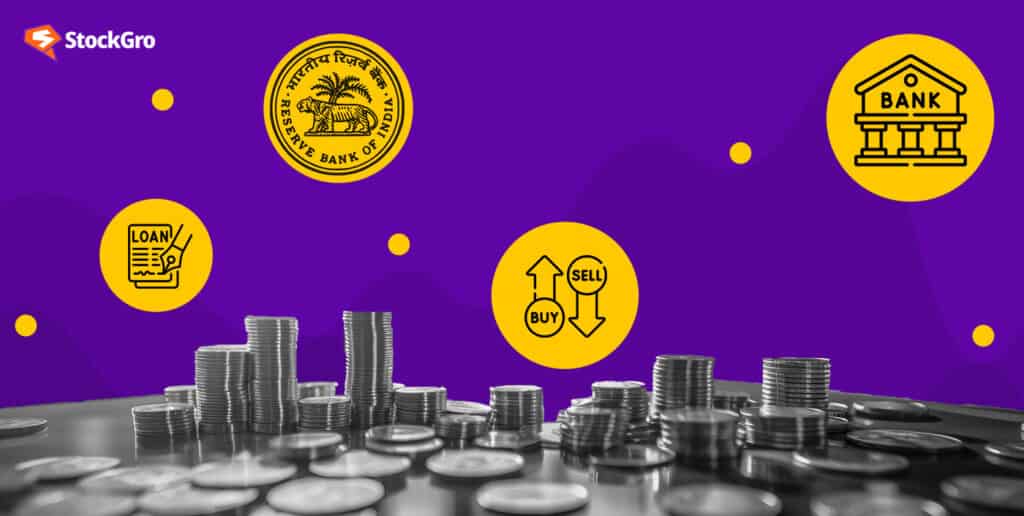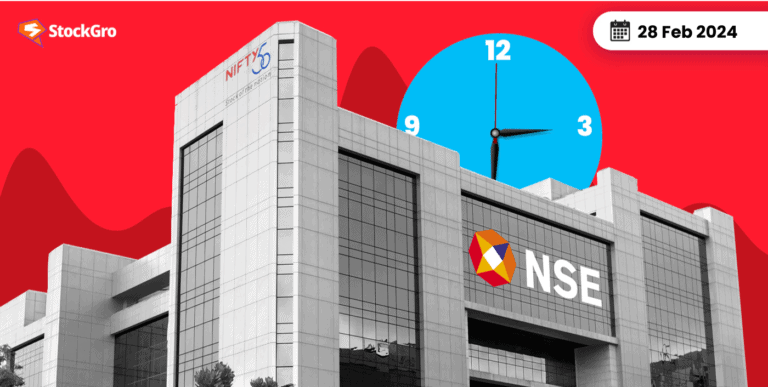
Financial literacy is more popular than ever today. People are planning early retirement and strategies to achieve financial freedom using various financial instruments. But have you wondered what is the driving force providing the platform and push for these developments? It is the financial service sector.
The financial service industry is not just driving individuals towards financial independence but the whole economy. It is fair to consider the financial service industry as the foundation for all the activities of the economy and its development.
Today’s article takes you through the details of India’s financial service sector, its growth and the top financial service companies in India.
What does the financial service sector cover?
The financial service sector includes all those institutions that facilitate individuals, businesses, and the economy to save, earn and grow their wealth. It consists of all the organisations that participate in some capacity towards achieving financial objectives.
Financial services consist of a wide variety of services, including banking, insurance, mutual funds, asset and wealth management, real estate, stock market, debt and bond market, tax consulting, audit consulting and more.
Also read: From colonial legacy to global ambition: The Indian insurance sector
History of the Indian financial system
The financial system in India during the pre-independence era was highly informal. The familiarity with money did not happen for Indians until the 18th century. Barter systems existed throughout the country as money was inaccessible to all citizens.
As the country came closer to independence, political parties started taking over the country’s rule, and the need for a robust financial system arose. This gave birth to the Reserve Bank of India in 1935 to regulate monetary and currency-related policies. Slowly more banks were introduced, and in 1969, 14 major private banks were nationalised to improve the country’s banking industry.
Apart from the banking industry, the other areas of finance took birth, too. Oriental Life Insurance Company marked the formal beginning of the insurance sector in India. Similarly, the Bombay Stock Exchange, established in 1875, laid the foundation for formal stock market trading in the country.
With liberalisation and globalisation in 1991, foreign players entered the financial market. The National Stock Exchange was set up in 1992 and has continued to be among the two largest Indian stock exchanges. IRDAI (Insurance Regulatory and Development Authority of India) regulates the insurance sector, and SEBI (Securities and Exchange Board of India) regulates the stock market.
Growth of financial services in India
With increasing technological advancements and regulatory reforms, the government has included various initiatives to improve the financial service sector. The sector has seen various financial institutions offering advanced services in banking, insurance, asset management, and capital markets. This growth has played a crucial role in supporting India’s economic development by providing access to capital, facilitating investments, managing risks, and promoting entrepreneurship.
Digital financial services like e-wallets, UPI (Unified Payment Interface), electronic trading platforms, and government initiatives like the Pradhan Mantri Jan Dhan Yojana, etc., are some noteworthy developments contributing to the growth of the sector.
Also read: Unravelling the power of public sector banks in India’s economic landscape
Significance of financial services industry in India
Financial services play a significant role in every economy as they are instrumental in moving funds between those who have in excess and those who do not have sufficient money.
Banks facilitate fund transfers between parties by accepting deposits and lending them as loans to those in need. Similarly, the stock market facilitates the transfer by allowing individuals to invest in public companies in exchange for the company’s part ownership. Capital markets aid businesses that do not wish to raise capital through debts. Insurance, on the other hand, protects parties from monetary losses promoting confidence and security.
Besides the above, the financial service sector has a significant role in funding for the government. The fiscal policies that consist of tax-related matters form a part of financial services. These taxes are the primary revenue for the government’s operations to run the economy.
Hence, the financial service sector is as essential as agriculture or any other primary sector since it facilitates the movement of money in the country.
India’s financial service sector today
- Today, India stands strong as one of the fastest-growing fintech markets globally. The market size is expected to reach $150 billion by 2025.
- The assets under management and the industry’s revenue are expected to touch $1 trillion and $200 billion, respectively, by 2030.
- By 2030, the payment segment, in particular, will reach $100 trillion in transaction volume and $200 billion in revenue.
- India’s performance is no less in the insurance sector. It is the second largest insurtech market in the Asia Pacific region. The market size is expected to reach $88.4 billion by 2030.
- With the growing digital finance market, the number of digital transactions reached 13 crores in 2022-23 and a transaction value of ₹139 lakh crores.
- The country has seen 17 fintech unicorns and funding of $34 billion between 2014-2022 for fintech start-ups, showing the increasing demand for fintech services.
Current trends in the financial service industry
- One of the biggest trends across the country is the increasing use of digital payments. Online payments and e-wallets are replacing cash and cards to a large extent, with small-scale street vendors to supermarkets accepting such payments.
- Another popular trend in recent days is the concept of BNPL – Buy now, pay later. This is where consumers buy products, including financial products like loans, without paying instantly.
- The government has been making efforts towards financial inclusion by introducing various schemes like Jan Dhan Yojana or Aadhaar-enabled payments. The objective here is to provide underserved populations with a platform to utilise the facilities in the financial sector.
- The need for strict and increased regulations has increased in the recent past. An increase in social media users and influencers has caused a spike in the number of fraudulent activities. Regulatory authorities like SEBI and RBI are introducing and reforming measures to increase transparency and protect the interests of consumers.
- ESG is another trend popular among investors today. ESG stands for Environmental, Social and Governance. Investors are looking for companies that are socially more cautious and responsible. This has become a significant factor while making investment decisions, besides the company’s financials.
Also read: Understanding the basics of the broking industry and its recent trends
Top financial sector stocks in India
Following is the list of top stocks in the financial sector, across various categories as listed on the Bombay Stock Exchange:
Company | Category | Share price (in ₹) | Market capitalisation (in ₹ crores) |
| HUDCO | Finance – Housing | 206.00 | 40,718.65 |
| LIC Housing Finance | Finance – Housing | 661.00 | 36,284.91 |
| Bajaj Finserv | Finance – Investment | 1,606.35 | 256,873.35 |
| HDFC AMC | Finance – Investment | 4,014.95 | 86,457.82 |
| Bajaj Finance | Finance – NBFC | 6,601.70 | 410,435.31 |
| IRFC | Finance – NBFC | 155.60 | 199,098.69 |
| Jio Financial | Finance – Others | 333.05 | 208,228.89 |
| Max Financial | Finance – Others | 917.00 | 31,878.25 |
| ICICI Securities | Finance – Stock Broking | 839.70 | 27,063.72 |
| Angel One | Finance – Stock Broking | 2,988.45 | 24,968.91 |
| Power Finance | Finance Term Lending | 409.00 | 134,941.16 |
| REC | Finance Term Lending | 458.65 | 120,496.33 |
| HDFC Bank | Bank – Private | 1,418.05 | 1,077,387.55 |
| ICICI Bank | Bank – Private | 1,050.45 | 739,092.72 |
| SBI | Bank – Public | 760.15 | 677,378.05 |
| Bank of Baroda | Bank – Public | 272.20 | 139,419.92 |
Bottomline
India’s financial ecosystem is going through a revolution. Considering the importance it has in running the economy, holding some finance-based stocks in your portfolio may work well. However, financial institutions must follow strict regulations, the failure of which can impact stocks negatively. Hence, it is essential for investors to check the history and future prospects of companies before making investment decisions.

